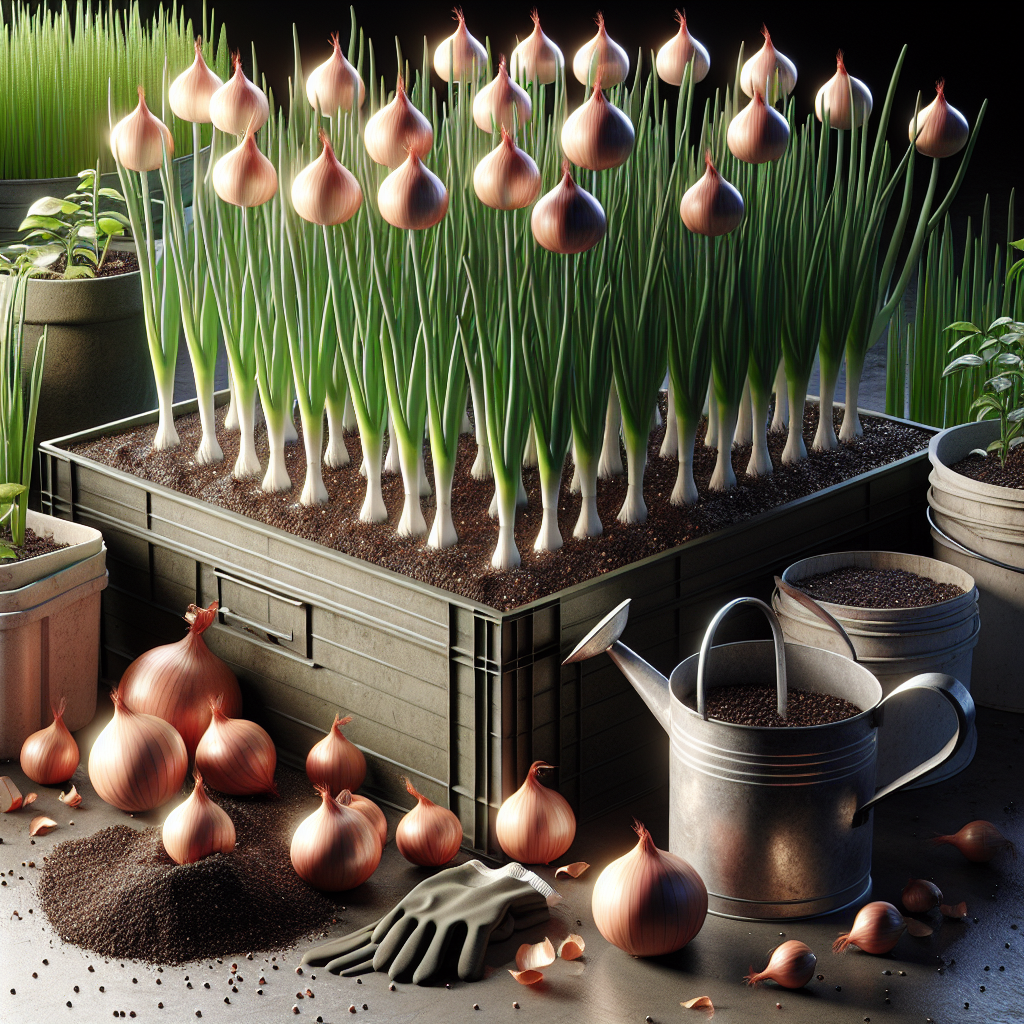Onions are a versatile and flavorful vegetable that can easily be grown in containers, making them a great option for gardeners with limited space. In this ultimate guide, we will walk you through everything you need to know to successfully grow onions in containers.
Choosing the Right Container
The first step in growing onions in containers is choosing the right container. Onions have shallow root systems, so a relatively shallow container that is at least 12 inches deep is ideal. The container should also have drainage holes to prevent water from pooling and causing root rot.
You can use plastic, ceramic, or wooden containers for growing onions, as long as they have adequate drainage. Keep in mind that onions need space to spread out, so choose a container that is at least 10-12 inches wide.
Selecting Onion Varieties
There are many different varieties of onions to choose from, each with its own unique flavor profile and growth habits. Some popular onion varieties for container gardening include:
– Bunching onions: Also known as scallions or green onions, these onions have a mild flavor and are harvested when they are still young.
– Red onions: These onions have a deep purple skin and a sweet flavor that makes them ideal for salads and sandwiches.
– Yellow onions: These are the most common type of onion and have a strong flavor that is perfect for cooking.
– White onions: These mild-flavored onions are often used raw in salads and salsas.
Preparing the Soil
Onions prefer well-draining soil with a slightly acidic pH level between 6.0-6.8. You can use a high-quality potting mix or create your own by mixing equal parts of peat moss, perlite, and vermiculite.
Fill your container with soil up to about an inch below the rim, leaving enough room for watering. Make sure to break up any clumps of soil and remove any debris before planting your onion sets.
Planting Onion Sets
Onions can be grown from seeds or sets (small bulbs), but sets are generally easier for beginners because they grow more quickly. Plant your onion sets about 1 inch deep and 4-6 inches apart in rows, depending on the size of your container.
Water your onion sets thoroughly after planting to help them establish their roots. Onions prefer consistent moisture but do not like to sit in waterlogged soil, so make sure to check the moisture level regularly and water as needed.
Caring for Your Onions
Onions are relatively low-maintenance plants that require minimal care once they are established. Here are some tips for caring for your onion plants:
– Watering: Onions need about 1 inch of water per week, either from rainfall or irrigation. Keep the soil evenly moist but not soggy.
– Fertilizing: Feed your onion plants with a balanced fertilizer every 4-6 weeks during the growing season to promote healthy growth.
– Mulching: Mulch around your onion plants with straw or shredded leaves to help retain moisture and suppress weeds.
– Thinning: Once your onion plants reach about 6 inches tall, thin them out by removing every other plant to allow the remaining plants more room to grow.
– Pests and Diseases: Keep an eye out for common onion pests such as thrips and aphids, as well as diseases like downy mildew and botrytis leaf blight. Treat any infestations promptly with organic insecticides or fungicides.
Harvesting Your Onions
Onions can take anywhere from 90 days to 9 months to reach maturity, depending on the variety you are growing. Harvest your onions when the tops start to turn yellow and fall over naturally.
To harvest your onions, gently pull them out of the soil by grasping the tops near the base of the plant. Allow them to dry in a warm, dry place with good air circulation for about two weeks before storing them in a cool, dark place.
Storing Your Onions
Proper storage is essential for preserving the flavor and texture of your freshly harvested onions. Store dry bulbs in mesh bags or hanging nets in a cool (45-55°F), dark place with good air circulation.
Do not store onions near potatoes or fruits like apples or pears, as they release ethylene gas which can cause onions to spoil prematurely. Check stored bulbs regularly for signs of mold or rotting and discard any damaged bulbs immediately.
In conclusion…
Growing onions in containers is an excellent way to enjoy fresh homegrown produce even if you have limited space. By following these tips on choosing containers, selecting varieties, preparing soil, planting sets, caring for plants, harvesting crops,and storing bulbs properly,you can successfully grow delicious homegrownonions right onyour patioor balcony.Are you ready totakeonthe challengeofgrowingonionsincontainers?Give ita tryand enjoythe satisfactionofharvestingyour veryownhomegrownonionsthisgrowingseason!













